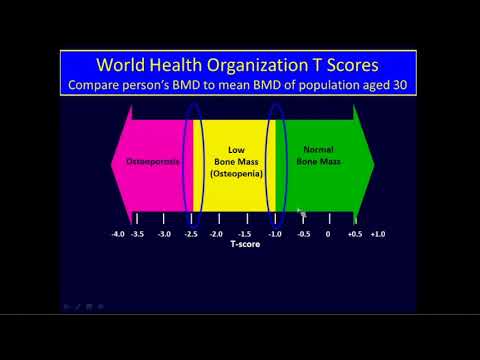Pre-menopausal osteoporosis refers to the loss of bone mineral density (BMD) in women prior to the cessation of menstruation. While osteoporosis is often associated with post-menopausal women, a growing body of evidence highlights its presence in younger females. This condition, though less common, carries significant morbidity due to increased risk of fragility fractures, chronic pain, and reduced quality of life.

Bone Metabolism and Early Bone Loss: A Pathophysiological Overview
Bone tissue is in a constant state of remodeling, driven by the balance between osteoblast-mediated bone formation and osteoclast-mediated bone resorption. In pre-menopausal osteoporosis, this balance shifts toward resorption due to hormonal imbalances, nutritional deficiencies, lifestyle factors, or underlying medical conditions.
Estrogen plays a critical role in regulating bone turnover. A deficiency—whether due to amenorrhea, premature ovarian insufficiency, or other endocrine disruptions—accelerates bone resorption, leading to weakened skeletal integrity.
Risk Factors for Pre-Menopausal Osteoporosis
Hormonal and Endocrine Factors
- Hypoestrogenism from anorexia nervosa, hypothalamic amenorrhea, or excessive exercise
- Hyperthyroidism, Cushing’s syndrome, and hyperparathyroidism
- Premature ovarian failure or surgical oophorectomy
Nutritional Deficiencies
- Inadequate calcium and vitamin D intake
- Low protein consumption
- Chronic malabsorption syndromes (e.g., celiac disease, inflammatory bowel disease)
Lifestyle Contributors
- Sedentary lifestyle
- Excessive alcohol intake
- Smoking
- Overuse of caffeine and carbonated beverages
Medication-Induced Bone Loss
- Corticosteroids
- Anticonvulsants
- Gonadotropin-releasing hormone (GnRH) analogs
- Chemotherapy agents
Genetic and Secondary Causes
- Family history of osteoporosis
- Low peak bone mass acquisition during adolescence
- Connective tissue disorders (e.g., Ehlers-Danlos syndrome)
Clinical Presentation and Red Flags
Pre-menopausal osteoporosis is often asymptomatic until a low-trauma fracture occurs. Red flags include:
- Vertebral compression fractures
- Persistent lower back pain without trauma
- Loss of height or kyphosis
- Recurrent stress fractures in athletes or active individuals
Early identification is crucial to mitigate progressive bone loss and prevent complications.
Diagnostic Evaluation and Imaging
Bone Mineral Density (BMD) Assessment
- Dual-energy X-ray Absorptiometry (DEXA) is the gold standard for diagnosing osteoporosis.
- While WHO T-score criteria (< -2.5) are standardized for postmenopausal women, Z-scores (< -2.0) are more appropriate in pre-menopausal populations.
| Score Type | Definition | Interpretation |
|---|---|---|
| T-score | Comparison to young adult mean | Not used in pre-menopausal women |
| Z-score | Comparison to age-matched mean | Z-score < -2.0 indicates “below expected range for age” |
Laboratory Tests
To identify secondary causes:
- Serum calcium, phosphate, magnesium
- 25-hydroxyvitamin D
- Parathyroid hormone (PTH)
- Thyroid function tests
- Estradiol and FSH/LH levels
- Celiac serology, renal and liver function tests
Comprehensive Management of Pre-Menopausal Osteoporosis
Addressing Underlying Causes
- Restore menstrual regularity in cases of hypothalamic amenorrhea
- Discontinue or adjust bone-depleting medications
- Treat underlying endocrine or gastrointestinal disorders
Nutritional Optimization
- Calcium: 1000–1200 mg/day through diet or supplements
- Vitamin D: Maintain serum levels ≥30 ng/mL, with supplementation of 800–2000 IU/day
- Protein: Minimum 1.0 g/kg body weight per day
- Reduce caffeine, alcohol, and phosphate-rich processed foods
Physical Activity
- Weight-bearing exercises (walking, jogging)
- Resistance training for muscle mass and bone strength
- Balance and coordination exercises to reduce fall risk
Pharmacologic Therapy
Pharmacologic treatment is reserved for women with:
- Fragility fractures
- Z-score ≤ -2.0 with significant risk factors
- Persistent bone loss despite lifestyle and dietary interventions
Common medications include:
| Drug | Mechanism | Notes |
|---|---|---|
| Bisphosphonates (e.g., alendronate) | Inhibit osteoclasts | Use with caution in reproductive-age women due to long half-life |
| Teriparatide | Anabolic agent | Stimulates bone formation; short-term use (≤2 years) |
| Denosumab | RANKL inhibitor | Not first-line in this population; requires careful monitoring |
Fertility considerations are paramount when choosing pharmacologic options.
Monitoring and Follow-Up
- DEXA scan every 1–2 years to track BMD changes
- Monitor serum 25(OH)D and calcium annually
- Reassess secondary causes if bone loss persists
- Reinforce adherence to exercise and nutritional strategies
Prevention Strategies in At-Risk Populations
Adolescents and Young Women
- Promote early bone-building habits
- Delay onset of amenorrhea due to overtraining or disordered eating
- Encourage adequate calcium and vitamin D intake during peak bone mass acquisition years
Women on Long-Term Medications
- Use the lowest effective dose of corticosteroids
- Consider bone-protective therapies alongside high-risk medications
Athletes and Dancers
- Screen for Female Athlete Triad: energy deficiency, menstrual dysfunction, and low bone density
- Implement multidisciplinary care: nutrition, physical therapy, endocrinology
Long-Term Prognosis
When managed appropriately, many women with pre-menopausal osteoporosis can maintain a stable bone mass, prevent fractures, and achieve normal activity levels. Early intervention, continuous education, and vigilant monitoring play critical roles in sustaining skeletal health.
Frequently Asked Questions:
Is osteoporosis before menopause common?
No, it’s relatively rare, but it can occur due to hormonal, nutritional, or medication-related factors.
What is the difference between osteoporosis and osteopenia?
Osteopenia indicates lower-than-normal BMD but not low enough to be classified as osteoporosis. It is a precursor state.
Can osteoporosis in pre-menopausal women be reversed?
With lifestyle changes, nutritional support, and appropriate therapy, bone loss can often be halted and partially reversed.
Should young women take bisphosphonates?
Only in severe cases with clear indications and under specialist supervision, considering reproductive safety.
How can I prevent bone loss before menopause?
Ensure adequate intake of calcium and vitamin D, maintain a healthy menstrual cycle, exercise regularly, and avoid smoking and excessive alcohol.
Pre-menopausal osteoporosis, while less prevalent than its post-menopausal counterpart, represents a critical concern in younger women with significant implications for lifelong bone health. Through timely diagnosis, targeted intervention, and sustained preventive measures, we can effectively manage bone loss and safeguard skeletal integrity well into the later decades of life.